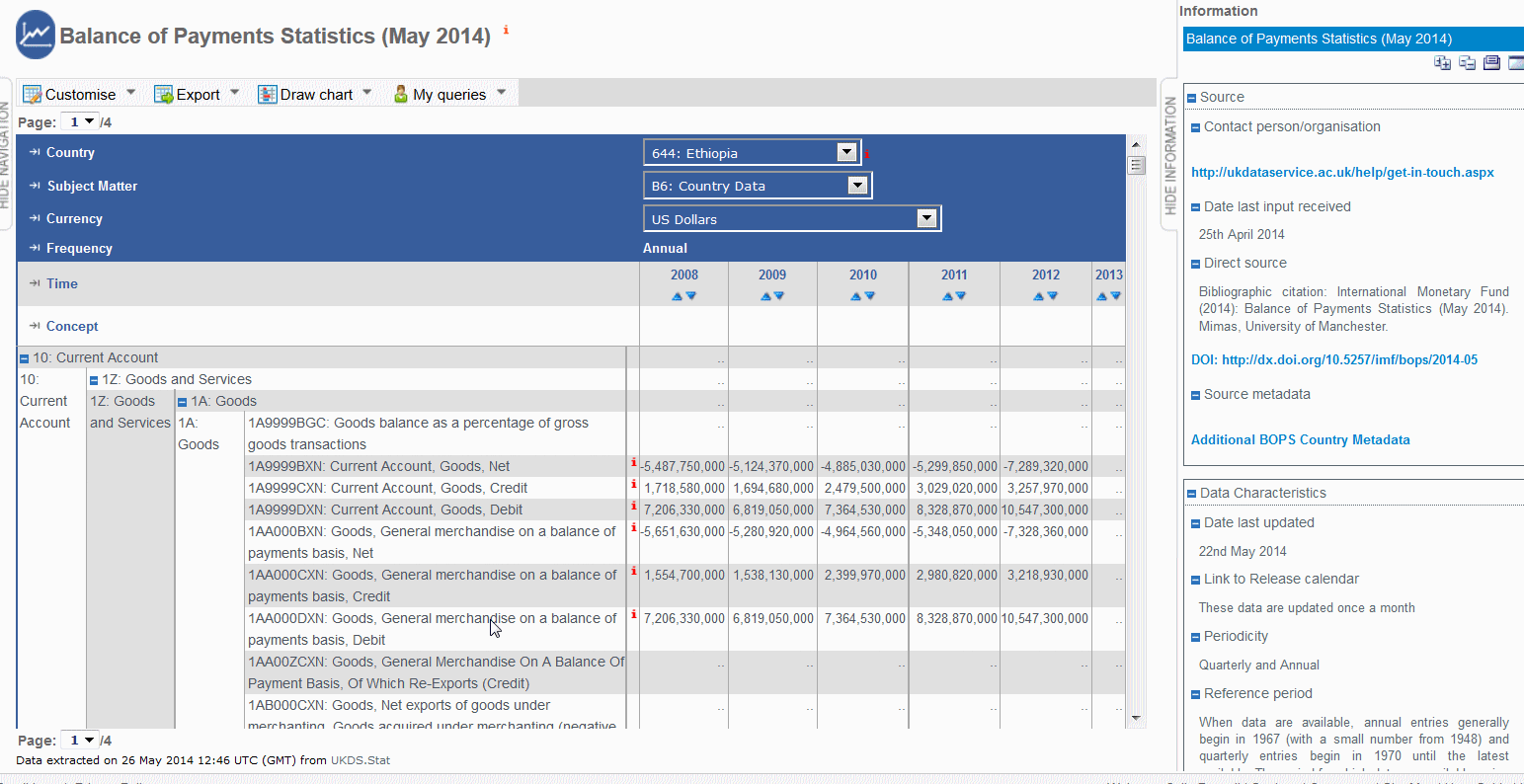Common framework
In making cross-national comparisons it is obviously important that a data series from one country should be measuring the same characteristics as the same series from another country. However since data from each country originates from that country's own statistical department there is a danger that this won't be the case. To minimise this danger, IGOs (intergovernmental organisations) have for a number of years sought to develop common frameworks for definitions, locations, time periods, methodologies and accounting principles for a vast range of data series.
National AccountsThe United Nations Statistical Commission created and now oversees the implementation, publication and revision of a common framework for national accounts. It does so in collaboration with four other IGOs: Eurostat, IMF, OECD and World Bank under the auspices of the Inter-Secretariat Working Group on National Accounts (ISWGNA). This group convenes and takes advice from expert working parties on various issues and publishes SNA News and Notes. Recommendations on these matters are made to the UN Statistical Commission whose views are given international legal force through endorsement by the UN.
The System of National Accounts 2008 (2008 SNA) is the latest version of the international statistical standard for the national accounts adopted by the United Nations Statistical Commission (UNSC).
The 2008 SNA is an update of the System of National Accounts, 1993 (1993 SNA).Occasionally the pre-2008 frameworks are used, referred to by their year of origin, e.g. 1968 SNA.
Eurostat has produced its own version of the SNA, often referred to as the European System of National and Regional Accounts - ESA 2010, to gain even more precise commonality across European national accounts. The previous European framework is referred to as ESA 95.
Try to compare national accounting data series using a common national accounting framework
More disaggregated economic data, social, health and education data is produced by the statistical departments of all countries. To make cross country comparisons using this data requires a common classification framework. This is provided by the UN Statistical Commission or, for their own specialised fields, the World Customs Organisation (WCO), World Health Organisation (WHO), IMF and International Labour Organisation (ILO). The UN Statistical Commission's international family of economic and social classifications is comprised of reference classifications that have been registered into the United Nations Inventory of Classifications for economic and non-economic data in fields such as demographics, labour, health, education, social welfare, geography, environment and tourism. In 1999, the UNSC published their basic principles, still in use today.
ISIC dataMany international macro databanks series are based on the ISIC (International Standard of Industrial Classification of All Economic Activities) classification. This characterises all economic activity into groups and levels based on type of activity. For example at the highest level, it uses the category 'Manufacturing', but disaggregates to sub-classes such as 'Manufacture of electric motors, generators and transformers' and sometimes to even finer levels.
The UN Statistics Division provides more details of ISIC classifications including the current ISIC Revision 4.
Most series for most countries will be ISIC revision 4 but some data series classified under earlier revisions are still current.
If at all possible compare series using the same classification scheme and same revision for each.
ISIC is a classification aimed to cover all economic activity, not just industrial activity
The UK Data Service also provides access to the international databanks containing series on energy, oil and related matters produced by the Energy Statistics Division of the International Energy Agency (IEA) (see Guide to the International Energy Agency datasets).
The IEA which, originated from OECD and Eurostat, compiles energy statistics from questionnaires, completed by national statistics offices. It thus seeks spatially harmonised statistics.
Data is collected using a common reporting method for OECD countries thus harmonising the series but data from non-OECD countries is not always strictly comparable.
The IEA's definitions and methodologies are obtainable from UK Data Service catalogue record and UKDS.stat interface.
In the UKDS.Stat interface, metadata for indivisual countries or series can be found by clicking on the 'i' icons in the tables. The panel to the right hand side of the table displays associated documentation.

The World Bank is seeking to harmonise many non-economic data series. For details to check comparability see the links to statistical strategy and methodology from the World Bank Data overview.
Use this activity to test what you have learned so far.



